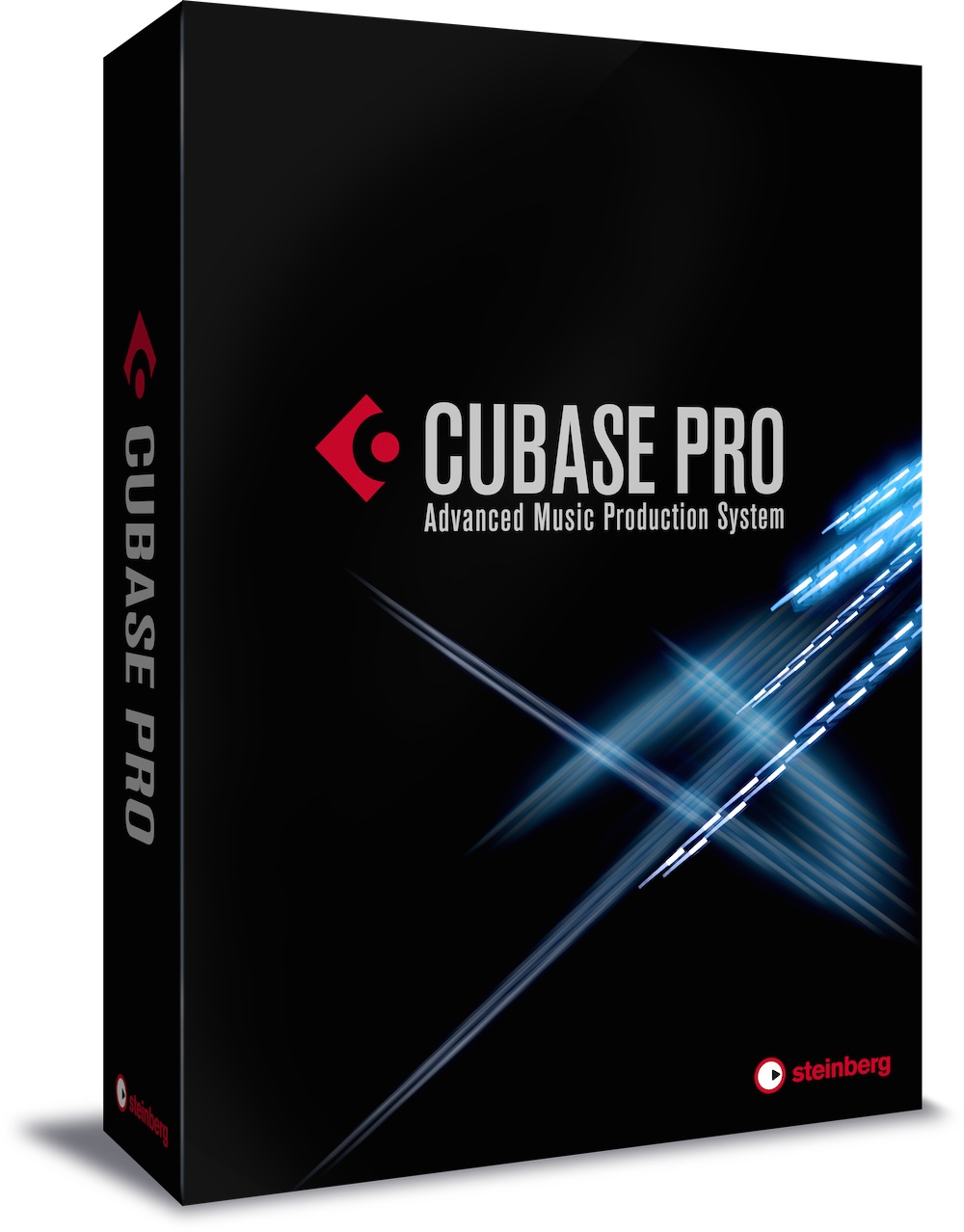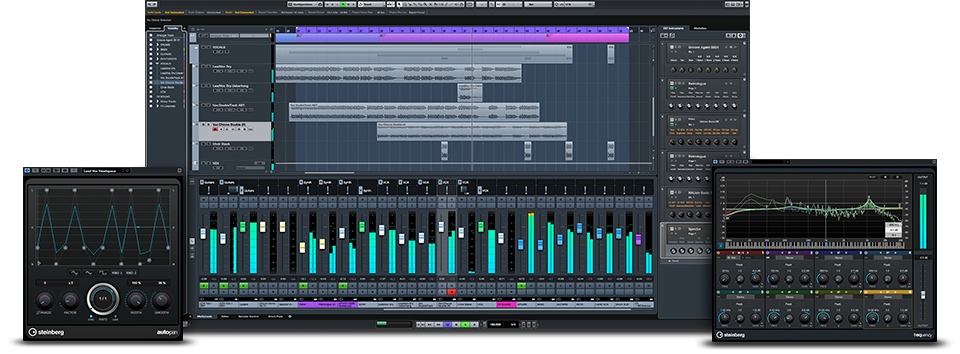New Software Review: Cubase 9 Pro by Steinberg

The new feature-packed Cubase 9 comes in three levels: “Pro,” “Artist,” and “Elements” — each offering users a plethora of powerful and intuitive tools based on their specific needs.
DAWs are the centerpiece of most studios in 2017, and the market is filled with a number of options for producers and studio owners alike.
The features and functionality of any given DAW are what sets it aside from the next, and with the heavy hitters like Cubase, Pro Tools and Logic all in their 9th or higher iterations, the question is no longer “What can my DAW do,” it is now “What can’t it do?”
There is no denying that DAW developers do a certain amount of stealing of ideas from one another, creating a bit of workflow parity for users.
Steinberg’s Cubase 9 Pro includes a bit of borrowing from others—including its own bigger sibling, Nuendo.
It offers features long-asked for by users, and a few new things we didn’t even know we needed. There are also a few improvements and corrections of features implemented in version 8, as well as a couple of the inevitable forgotten fixes sure to make Cubase forum members fume a bit.
Steinberg offers three levels of Cubase 9: Pro, Artist and Elements. This review is focused on “Pro”—and any tools not available in other versions are noted. For further comparison between versions at a glance, see here.
Features and Use
On first glace, Cubase appears largely unchanged, but look a little harder and you’ll find clues hinting at some of the most notable improvements.
On the bottom of the Project Window, you’ll now find a transport bar and buttons for switching various Record Modes, Auto-Quantize, etc. This bar is customizable, and if you click where there are three vertical dots, it will expand to show even more options. It’s thin and unobtrusive, which is good because this part of the screen is where one of the major new features appears.
Toggling on the Lower Zone uses part of your Project window to open a MixConsole, Editor window, control for the new Sampler Track or Chord Pads. It’s a bit similar to Logic in that way, and great for single monitor/laptop users. The MixConsole makes great use of the real estate here, switching between Faders, Inserts and Sends with the click of a button. You can also expand it further to access the MixConsole toolbar.
The Sample Editor and Chord Pads are what you would expect, but the Sample Track is of real interest. Drag any audio file from your project or the MediaBay into this pane and Cubase instantly maps it to a keyboard and creates a track, allowing you to trigger that sound via MIDI control. It is really well-integrated and simple to start using immediately.
The Sampler itself is quite full-featured, including Audio Warping speed and formant controls, and Pitch, Filter and Amplitude envelopes. All are fully automatable and assignable to Cubase’s Quick Controls for use with MIDI controllers. Add to that a toolbar with quick access to looping, reverse, fixed pitch and other controls and it’s very clear that Steinberg put a lot of thought into this instrument. In fact, they even included the Caleidoscope sample library with hundreds of samples.
Cubase 9 has revamped the Marker system, now letting you have up to ten marker tracks (available in Pro only). A feature borrowed from Nuendo, this is handy for keeping track of multiple elements of a song—for example, you can use one marker track for song form and another to note potential drum or vocal edits while tracking.
Clicking the “Check” button on the marker track makes it active, and marker-based key commands now refer to it. Another update to the markers lies in the Export Audio Mixdown window, where you can now export sections of your projects as denoted by cycle markers.
The MixConsole also received some attention from the developers, and one standout feature is MixConsole History (again, available in Pro only). Utilizing a separate undo history from the Project Window, you can now undo fader and pan moves, EQ and channel strip adjustments, and even third party plugin changes.
It is worth noting that even though you can have up to three MixConsoles in a session, the history for all three is the same. This is a big deal not just for experimentation, but for the eventual issue of “Damn, I changed my perfect background vocal balance, I wish I could go back to where I started!”
On the subject of plugins, Steinberg has revamped a few of their stock offerings. The Maximizer has gotten not only a GUI makeover, but a new algorithm selectable as “Modern Mode.”
Modern Mode is brighter and more open in the highs, while being a bit more modest in the midrange. It also adds a “Recover” control, which affects the initial release after the attack. The bundled AutoPan plugin got a bit of an upgrade as well, with new shapes and sync modes. It also sports a similar look to the Maximizer, as do a number of other stock plugins.

Although Cubase 9 appears similar to is predecessor in terms of aesthetics, there are scores of new features under the hood that are sure to inspire Steinberg’s wide and eclectic user base.
The highlight of the new plugins however, is the Frequency EQ (Pro only), an extremely flexible 8-band parametric equalizer. Each band is switchable between Low Shelf, Peak, High Shelf and Notch, with the highest and lowest bands adding a filter with 5 switchable slopes.
If that wasn’t enough, each band also has a switchable Linear Phase mode, and can be toggled between Stereo, Left/Right and Mid/Side modes. Finally, activating Auto-Listen solos a band when you click on its node, and there’s a piano roll that lets you adjust frequency by pitch.
It is true that none of the features are breaking entirely new ground, but you’d be hard pressed to find this much functionality in competing stock plugins. (Comparable third party EQs like FabFilter’s Pro-Q 2 can cost hundreds of dollars.)
One important note about Cubase 9 is that it is now 64-bit only. Version 8 had a built-in plugin bridger, allowing users to continue using their 32-bit effects, but that is a thing of the past. If you just can’t let go of those vintage plugins, a third party VST bridger like JBridge is your answer.
To help on the plugin management front is the new Plugin Sentinel, which scans every plugin while the application is loading and disables any that crash, preventing stability issues. You can access this plugin blacklist in the Sentinel if you’d like, and reintroduce the offenders at your own risk.
This is actually something Cubase has always done, but the blacklist was hidden away deep in the program’s file structure. Now troubleshooting problematic plugins is a lot easier.
To Be Critical
When rolling out a whole version software upgrade (as opposed to a .5 version), not only are there high expectations for new features, but rightfully users expect to see previous flaws fixed.
Steinberg has an active forum community and does a solid job of listening to users’ requests (like removing the “Edge Hints” window pop-ups from the last version that just annoyed everybody), but there are a few leftover concerns to be dealt with.
There is a new video engine that Steinberg promises will appear in the next update, as well as a fix for some audio warping glitches. But there are also some small requests that could use attention as well, for example, it would be really nice to be able to rearrange track order from the MixConsole window.
One of the major complaints about version 8 was the handling of multiple windows and key commands—mainly a problem for multi-monitor users. For example, some commands exclusively for the Project Window won’t work if another window like the MixConsole is active.
This sounds logical, but if I have multiple windows open and want to make something happen, having to grab the mouse and click on that window defeats the purpose of a key command. Since a key command is used for one function only (unless it’s something like Zoom that is used in multiple editors), that command should work regardless of which window is active.
With many engineers working with hybrid software/hardware setups, Cubase has long been on the forefront of using outboard hardware as inserts. This system however, has not been updated in a long time. Obviously, there are limits to what can be done here, but the basic ability to automate the insert’s bypass and send/return levels would be nice. The ability to use a stereo hardware effect as two separate inserts without routing gymnastics is another necessary update. Hybrid systems are the way of the future for many engineers, and it would be nice to see some forward thinking put into this functionality.
Clearly, Frequency is a well-featured EQ, but I’ve got a bone to pick: Mousing around pointing and clicking works as expected, but when you’re trying to work faster, the plugin doesn’t always respond as you’d expect.
On many similar EQs, double-clicking on a node activates and deactivates it, and the scroll wheel adjusts the Q. Every developer has the freedom to assign functions wherever they like, but Frequency doesn’t even work like the EQ that’s built into every single channel in Cubase! This is a big deal because I find myself constantly stopping to remember that this doesn’t work like I expect it to. In addition, it would be nice to be able to switch band filter types and stereo controls by right-clicking.
Lastly, I do wish there was a way to open the aforementioned Sample Track editor directly in its pop-up window instead of navigating to the Lower Zone and then popping it out. If you’re not a Lower Zone user, this is a kludgy process. According to Steinberg, this is a design decision, but I do wish there was the option to pop the window out directly like the audio sample and MIDI editors.
Summing it Up
All in all, Cubase 9 Pro is a worthy successor in the lineage of one of the most flexible and comprehensive DAWs on the market.
Steinberg has not only remained competitive with other DAWs’ capabilities, but introduced new, well-implemented features that users should be excited about.
The multiple Marker Tracks, MixConsole history, and new Sampler Track stand out as the most impactful for me personally, but one of Cubase’s strengths is its flexibility in a number of uses (i.e. MIDI/composition, Tracking, Mixing, and more). Undoubtedly users will find a wide range of the new features beneficial.
Steinberg does an admirable job with periodic updates (although there are some who would like to see them even more often), so keep an eye out for bug fixes. At the time of this writing, they have already released version 9.0.10—which this review was based on—and you can keep track of the version history here.
An unexpected result of the proliferation of project and home studios has been parity in the DAW world, and at $549 ($579 for a boxed version and $99 to upgrade from 8.5) Cubase 9 Pro affordably retains its place among the best with incredible functionality.
Please note: When you buy products through links on this page, we may earn an affiliate commission.






